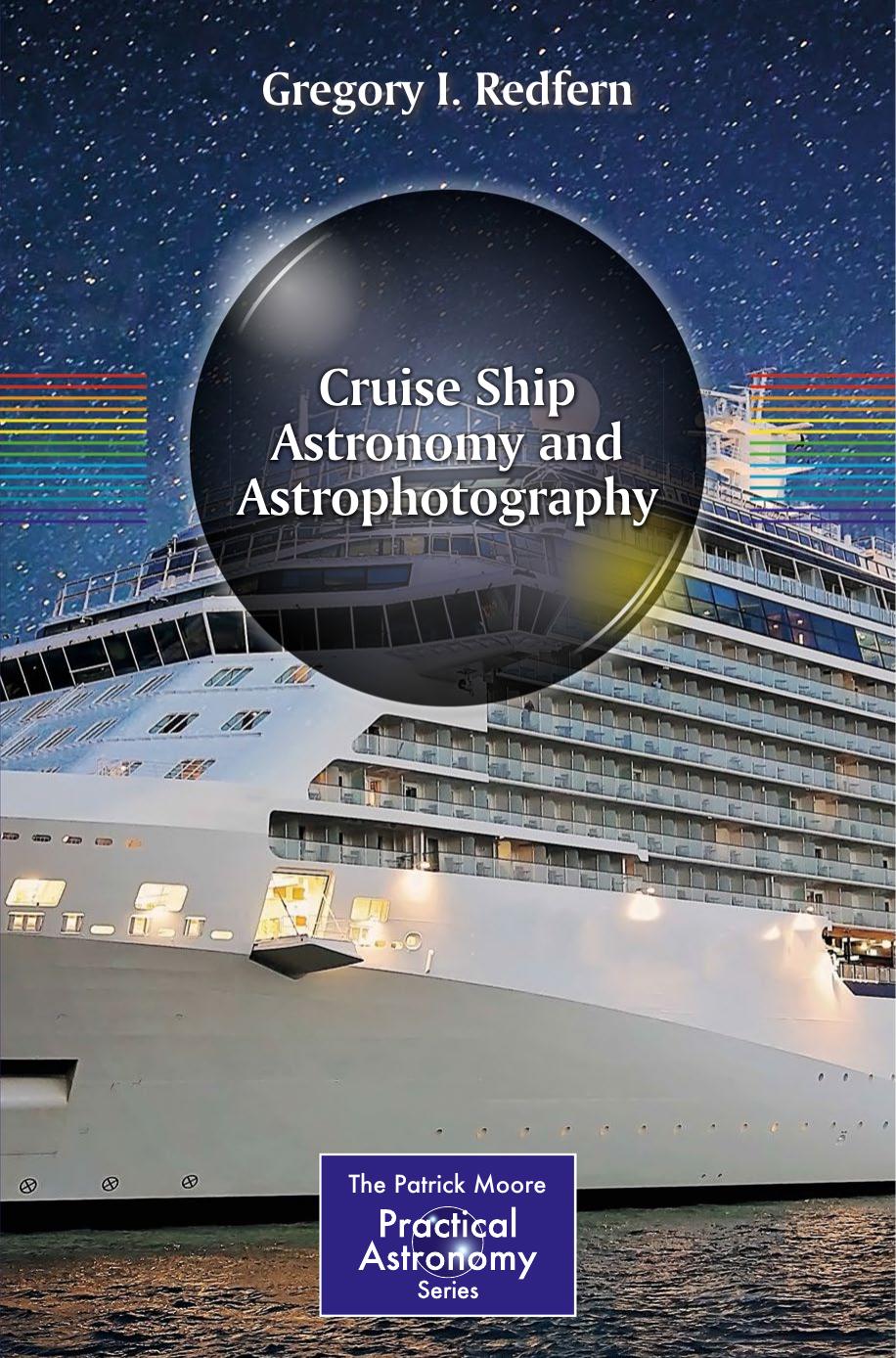Cruise Ship Astronomy and Astrophotography by Gregory I. Redfern

Author:Gregory I. Redfern
Language: eng
Format: epub, pdf
ISBN: 9783030009588
Publisher: Springer International Publishing
Viewing the Moon at Sea
The Moon at sea is a wonder to behold. It goes through its main phases of new, first quarter, full and last quarter each lunar month of 29.5 days. You can photograph the Moon as it goes through its phases. The Moon photographs well during lunar eclipses, but we will cover that in Chap. 10.
Your software will tell you the Moon’s phase, the Moon’s location in the sky, as well as when the Moon rises and sets, all of which is very important information. Your planisphere and star charts are of no value in providing information about these details. The Moon also will move approximately 12 degrees from night to night, moving west to east in the sky. The ship’s information channel or daily bulletin may have Moon information as well.
It will also appear higher and lower in the night sky depending on the time of year. As a rule of thumb the Moon will be at its highest in the night sky for the Northern Hemisphere in the fall and winter months, lowest in the night sky during the spring and summer months; the same holds true in the Southern Hemisphere, but remember that their seasons are opposite those of the Northern Hemisphere. Because you won’t be using a telescope at sea the Moon’s maximum or minimum height above the horizon really isn’t a concern. The Moon will always rise and set on the sea horizon, which is always a magic moment as you shall see.
As we discussed in Chap. 4 if you are deep down under in the Southern Hemisphere you will also notice that the Moon looks upside down compared to how it appears in the Northern Hemisphere and lingers much farther towards the northern horizon. This can be a bit disorienting when you experience it for the first time! But it does make for fascinating photographs, as you can see (Figs. 9.1 and 9.2).
Fig. 9.1Object viewed: Full Moon. (Image by the author)
Ship: Azamara Quest
Lens used: 55–200 mm at 200 mm f/5.6 DX and cropped
ISO : 1000
Exposure: 1/3200 second
Comment: Full Moon as seen off the coast of Australia. Moon is literally upside down for those used to seeing the Moon in the northern sky
Download
Cruise Ship Astronomy and Astrophotography by Gregory I. Redfern.pdf
This site does not store any files on its server. We only index and link to content provided by other sites. Please contact the content providers to delete copyright contents if any and email us, we'll remove relevant links or contents immediately.
| Aeronautics & Astronautics | Astronomy |
| Astrophysics & Space Science | Comets, Meteors & Asteroids |
| Cosmology | Mars |
| Solar System | Star-Gazing |
| Telescopes | UFOs |
Turbulence by E. J. Noyes(7040)
Tools of Titans by Timothy Ferriss(6950)
Astrophysics for People in a Hurry by Neil DeGrasse Tyson(4620)
Room 212 by Kate Stewart(4107)
Pale Blue Dot by Carl Sagan(4002)
The David Icke Guide to the Global Conspiracy (and how to end it) by David Icke(3883)
Secrets of Antigravity Propulsion: Tesla, UFOs, and Classified Aerospace Technology by Ph.D. Paul A. Laviolette(3450)
Apollo 8 by Jeffrey Kluger(3200)
Losing the Nobel Prize by Brian Keating(3187)
A Journey Through Divination and Astronomy by Publishing Pottermore(3074)
Goodbye Paradise(2964)
COSMOS by Carl Sagan(2950)
Brief Answers to the Big Questions by Stephen Hawking(2878)
How to Read Water: Clues and Patterns from Puddles to the Sea (Natural Navigation) by Tristan Gooley(2855)
The Five People You Meet in Heaven by Mitch Albom(2843)
The Order of Time by Carlo Rovelli(2714)
How to Read Nature by Tristan Gooley(2666)
A Brief History of Time by Stephen Hawking(2474)
Aliens by Jim Al-Khalili(2382)
